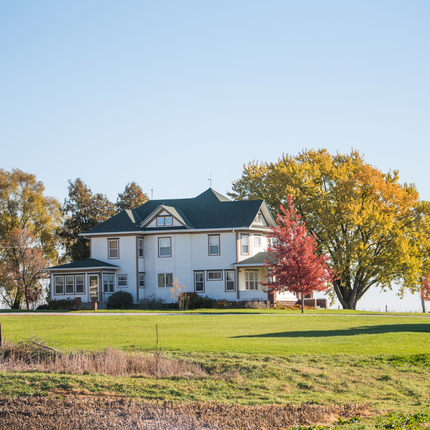By Trenton Buhr, former staff member
In today’s technology-driven world, frustrations can run high when access to the internet is hindered because of an equipment failure, or in the case of many rural Nebraskans, the lack of access to high-speed service.
Two bills before the Nebraska Legislature are looking to address the issue.
LB 996, drafted by the Center in partnership with Sen. Brandt’s office, would create the Broadband Data Improvement Program. Enactment of this program will help ensure the state is able to fully access federal broadband grant programs by complying with data verification requirements set forth by the Federal Communications Commission. Should no federal guidelines be established for crowdsourcing data to better complete Nebraska’s broadband map, the Public Service Commission would create a crowdsourcing program, promote the program and allow for feedback on inaccuracies on federal broadband data.
LB 992 would adopt the Broadband Internet Service Infrastructure Act and provide for certain broadband and Internet-related services. Like LB 996, this bill seeks to implement elements of the Rural Broadband Task Force report released in late 2019. This would be achieved by allowing broadband providers to utilize electric utility easements in order to expand infrastructure. The bill would also create the position of a state broadband coordinator to encourage county-based solutions to broadband development and explore the creation of cooperatives in underserved areas of the state. It would also require the Nebraska Library Commission to employ regional technicians in order to assist public libraries with digital training and E-Rate filings. Finally, the bill would establish a separate fund in order to support the construction of fiber optic networks for public libraries across the state.
The Transportation and Telecommunications Committee will have hearings on the bills Monday.
The legislation currently being considered was brought forth as a result of Center constituents expressing concerns about inaccuracies in broadband map data and lack of service access.
Here are some of the stories shared with us:
Jennifer Pellatz, Neligh
Jennifer Pellatz and her family have been living on their farm near Neligh, Nebraska, since 2002. While a lot has changed in farming since they moved outside of town, their communication infrastructure remains archaic.
With phone lines from the early 1950s and a fiber internet line nowhere to be found, they are far behind current capabilities. Though they’ve tried dial-up and a few satellite companies, their internet has never been very strong or reliable. When her kids were still at home, poor connection was a constant issue for their school work and daily life. Though Jennifer’s kids have since graduated, the problem remains.
“Simple activities like watching class videos or submitting assignments took far longer than needed, and there wasn’t much bandwidth left for other things,” Jennifer said.
Jennifer, like many Americans today, is currently taking classes online. When the internet works, she has no trouble, but bad weather or utility work can completely knock out her the service. She even takes her laptop to work to submit assignments because waiting until the last second is too risky.
Through college, Jennifer has learned of job opportunities available to work from home, however, without a reliable and strong internet connection, she can’t apply for such positions. She has seen many internet companies bring their services to town, but they won’t extend services to her area due to the high costs of expanding into rural locations.
From education to employment, slow internet is holding families like Jennifer’s back. This wouldn’t be a problem if they lived in an urban area, but the farm is where they need—and want—to be.
Jessica Shaver, Orchard
On a family farm near Orchard, Nebraska, Jessica Shaver runs a daycare, Zumba classes, and raises a family. She has lived there for a few years and her internet service has not been a bright spot. Although they have a wired connection, the reliability is low and, at times, the internet goes out for days on end.
Jessica is now a full-time student taking online classes, making reliable internet extremely important. Spotty connections and poor speeds can be detrimental. Submitting large files, taking tests, and watching live lectures require a constant connection. Without it, she receives lower quality education and spends time waiting instead of working. Only a few weeks into her classes, she has already lost connection during a quiz and lecture.
Another important part of her life, Zumba classes, also relies on the internet. She gives three lessons a week, all from her home. Like any business, consistency and quality are vital.
“If the internet is out, I am unable to download any music or videos, which I need to learn and create choreography for classes,” Jessica said.
If the problem lasts too long, the class could be delayed.
Right now, her kids are too young for homework, but Jessica is worried about their future. With the prevalence of electronic devices, K-12 education is poised to use the internet more and more which will only increase the burden on their household. Uploading videos, completing online homework, and streaming movies can’t happen at the same time.
The Shavers, like many rural households, will continue to face an uphill battle without reliable broadband. Gaining access provides them opportunities to thrive and grow in their rural life.
Melissa Herman, Valley
Douglas County is home to Nebraska’s largest city and some of the best internet. However, for some people in the agricultural parts of western Douglas County, the internet is far from ideal.
Melissa Herman and her family live outside of Valley, where they run a horse boarding business, and she works from home on insurance filing.
Living next to Highway 275, Melissa and her family didn’t expect to have poor internet. Coming from Omaha, this was a major change. Melissa’s work requires that she download and upload files, join in online meetings, and use the internet every day. However, if anyone but her is using the internet, lag is a major problem. Luckily, she is usually done with her work when the kids get home. But, it can still be an issue.
If their internet goes out entirely, which it does regularly, Melissa has to go to her mother’s house.
“It’s critical,” Melissa said. “I wouldn’t be able to do my job at all without the internet.”
They may no longer live in a city, but that doesn’t mean the internet plays a smaller role in the Herman family’s life. Like Melissa, rural residents with a connection can explore opportunities traditionally cornered to cities. This can make all the difference for people who want to live in a rural place.
Christopher Burbach and Lonny Mitchell, Northeast Community College, Norfolk
Precision agriculture is the new frontier for farmers and ranchers. The technology’s goal is to apply inputs to crops at a subfield level. Rather than spraying chemicals on the whole field, farmers can pinpoint an area of the field which needs it most.
This benefits farmers by maximizing cost to revenue in their favor. It also decreases the waste of products on plants which do not need it.
Over time, the amount of data collected has increased substantially. Satellites, in field testing, and equipment on tractors gather information about the plants.
“The field looks to be moving toward real time data,” said Lonny Mitchell, precision ag trainer with Northeast Community College.
Storing and accessing this data can be a problem. Poor cellular signals can slow transmission of data and reduce the technology’s usability.
“If [farmers and ranchers] don’t have easy access to it, they won’t use it,” said Christopher Burbach, director of Northeast Community College’s Precision Ag program.
Currently, some data is stored then transferred to the cloud when the cell phone connects to an internet source. Other equipment uses cellular data in real time.
Many farmers are already using the technology to varying degrees. Some have not added it into their practice. Northeast Community College’s program has a traveling precision ag lab that tours the state, demonstrating applications in real time.
As agriculture technology continues to advance, it will become an integral part of the operation. The need for consistent, strong broadband access will be increasingly important.
Susan Norris, Plainview
Susan Norris has seen tremendous growth in Plainview since she began working in the community two years ago. As she directs the economic development efforts in a handful of towns in and around Pierce County, Norris hopes to spread similar growth.
Plainview is notable for being the first town in Nebraska to be entirely served by fiber internet. Although they made great strides years ago, the community still sees its share of internet problems. The speed of the service can swing during the day, sometimes too slow for businesses to run credit cards. Often, speeds will go down when the school day ends.
A county north, in Creighton, food trucks will come from out of town to sell to local residents. This has been a great way to bring variety and business into the community, but the trucks have a hard time connecting to the internet, and must resort to cash purchases. Whether this is just a nuisance for customers or a loss of business, it is problematic.
For Susan’s development efforts, every asset counts. Missing out on reliable, affordable, and fast internet could be a drawback to our communities. In small towns, developers have difficulty predicting what opportunities will come up. We don’t want to see unreliable internet access standing in the way.
Nathan Ragsdell, Midland eSports, Fremont; Ramsey Jamoul, Midwest Esports, Wichita
The rapid advancement of esports has challenged views of athleticism and opened new doors for many schools. Tens of thousands of high school students now play video games competitively for their school or on their own. Some of these competitors are able to land scholarships or even play professionally. To get there, they need the right equipment: good computers and quality internet. Right now, many in rural areas are left out.
The platforms for play are growing rapidly. With so many students involved, Midwest eSports, a regional organization, provides a structure for getting to the next level. They host tournaments around the region for people to compete on a big stage. Midwest eSports hosted more than 50 events in 2019, and hopes to breach 100 in 2020.
Ramsey Jamoul, CEO of Midwest eSports, has high hopes for the organization.
“Our goal is to help players compete in a way to either get a scholarship or make a career out of their talent,” he said.
A handful of players find Midland University to be the next level. The Fremont, Nebraska, university helped pioneer collegiate esports by starting a varsity program in 2016. They were a founding member of the National Association of Collegiate Esports (NACE). Today, there are around 150 schools with club or varsity esports programs playing games from Madden to Hearthstone. Midland, which plays Overwatch, League of Legends, and other games, has 26 players—all on scholarship.
As Midland continues to build its program, coach Nathan Ragsdell is concerned with the lack of access for so many.
“There are no facilities to go and get involved,” he said. “There is nothing similar to a public gym for esports, and, at home, good internet is either too costly or non-existent.”
Jamoul is also concerned, noting that without adequate internet and computers, improving at esports can be difficult. One of Midland’s players, who hails from a small Nebraska town, demonstrated this problem. Ragsdell said she played for years with lag and is now excelling on a better connection.
With the sport poised for additional growth, opportunities will continue to escape students who lack access to reliable internet service.
Can't make it to the hearing. Here's how you can submit written testimony.





